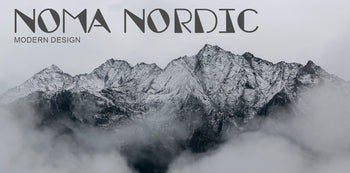Designers
Arne Lindaas - in the Garden of Eden
Read more
Read more
Finn Juhl - Another Danish icon....
Finn Juhl (1912 -1989) was a Danish architect, interior and industrial designer most known for his furniture design. He was one of the leading figures in the creation of “Danish design” in the 1940s and he was the designer who introduced the Danish Modern to America.
Read more
Finn Juhl (1912 -1989) was a Danish architect, interior and industrial designer most known for his furniture design. He was one of the leading figures in the creation of “Danish design” in the 1940s and he was the designer who introduced the Danish Modern to America.
Read more
Get to know Norwegian designer Olav Joa!
And here he is!…..
The unknown but still amazing Norwegian designer Olav Joa, also mistakingly called Olav Joff probably because people misread his signature and think it says Joff instead of Joa:-). Funny….
Olav Joa was born in Sola, Norway 19th of March 1942, and he retired in 2011.
As I mentioned earlier very little information is to be found of Joa. Still I found some thanks to Mats Linder and it is quite interesting reading….
Joa is most known for his Steel Art series produced by Polaris. It started randomly when a worker in the factory found a steel remain on the floor after the production. He started polishing this interesting steel piece, and suddenly it looked really good!
Designer Olav Joa got his hands free to take on the idea and the result was the series «Steel art» in which ended up with four candlesticks, two wallclocks, a dish, bowl and two vases! Quite surprising how you suddenly make good art so random, and so unplanned.
Read more
And here he is!…..
The unknown but still amazing Norwegian designer Olav Joa, also mistakingly called Olav Joff probably because people misread his signature and think it says Joff instead of Joa:-). Funny….
Olav Joa was born in Sola, Norway 19th of March 1942, and he retired in 2011.
As I mentioned earlier very little information is to be found of Joa. Still I found some thanks to Mats Linder and it is quite interesting reading….
Joa is most known for his Steel Art series produced by Polaris. It started randomly when a worker in the factory found a steel remain on the floor after the production. He started polishing this interesting steel piece, and suddenly it looked really good!
Designer Olav Joa got his hands free to take on the idea and the result was the series «Steel art» in which ended up with four candlesticks, two wallclocks, a dish, bowl and two vases! Quite surprising how you suddenly make good art so random, and so unplanned.
Read more
Jonas Hidle - The Norwegian Lamp expert!....
Read more
Read more
Josef Frank - Who else?...
Josef Frank (1885-1967) grew up in Vienna in a Jewish family and studied architecture at Konstgewerbeschule. In 1925 he started the Haus & Garten interior firm together with Oskar Wlach and Walther Sobotka.
Josef Frank was Vienna modernism’s foremost figures. He was against puritanical principals and feared that standardised interiors would make people too uniform.
Josef Frank began at Svenskt Tenn in 1934 and few years later had his international breakthrough. Svenskt Tenn at the World Expositions in Paris in 1937 and New York in 1939 was completely ideal of the time with its bold contrasts in materials and colours. With great attention they became the expression for “Swedish Modern”.
Read more
Josef Frank (1885-1967) grew up in Vienna in a Jewish family and studied architecture at Konstgewerbeschule. In 1925 he started the Haus & Garten interior firm together with Oskar Wlach and Walther Sobotka.
Josef Frank was Vienna modernism’s foremost figures. He was against puritanical principals and feared that standardised interiors would make people too uniform.
Josef Frank began at Svenskt Tenn in 1934 and few years later had his international breakthrough. Svenskt Tenn at the World Expositions in Paris in 1937 and New York in 1939 was completely ideal of the time with its bold contrasts in materials and colours. With great attention they became the expression for “Swedish Modern”.
Read more
Torbjørn Afdal - Norwegian furniture designer!
Read more
Read more
Yngve Ekström - The Swedish designer with a love for Pine....
Yngve Ekström (1913-1988) grew up in Småland near Sweden’s oldest furniture factory. His father Oskar Ekström made wooden diningchairs for the localfactory. At the age of thirteen Yngve Ekström began working on a sawmill. The inherent sense of carpentry and craftsmanship, as a natural consequence, gave a versatile skill in handling and shaping wood.
READ MORE HERE
Read more
Yngve Ekström (1913-1988) grew up in Småland near Sweden’s oldest furniture factory. His father Oskar Ekström made wooden diningchairs for the localfactory. At the age of thirteen Yngve Ekström began working on a sawmill. The inherent sense of carpentry and craftsmanship, as a natural consequence, gave a versatile skill in handling and shaping wood.
READ MORE HERE

